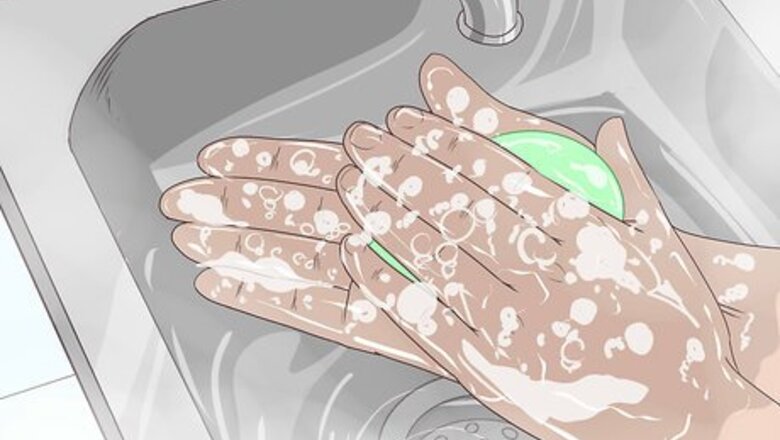
views
X
Research source
Cleaning the Wound at Home
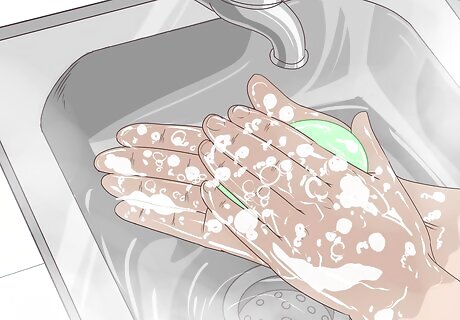
Wash and dry your hands. Use hot water and an antibacterial soap to thoroughly wash your hands, making sure to scrub in between all of your fingers and on every surface. Dry your hands on a fresh, clean towel, instead of a hand towel that has been used by others. When cleaning out any wound it is very important to have your hands clean and dry. This will prevent you from adding more germs and bacteria to the wound.
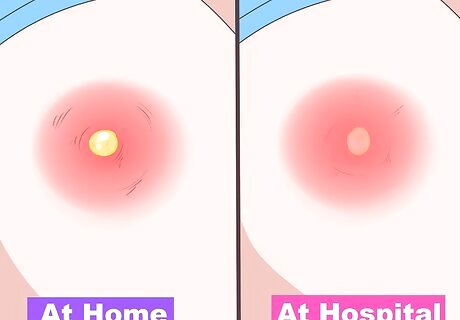
Inspect the wound closely before touching it to determine if you can clean it. Look closely at the wound to figure out where the wound opening is and where the pus is coming from. If you see areas where the pus is on the surface of the wound, you can clean these at home. If you see that the pus is inside of an abscess, a raised area of skin that is sealed, then it’s best to have it drained by a medical professional. Take your time assessing the wound so that you don’t disturb areas that are not exuding pus and are healing. Disturbing these areas unnecessarily can just open up the wound, creating another area where germs and bacteria can enter.
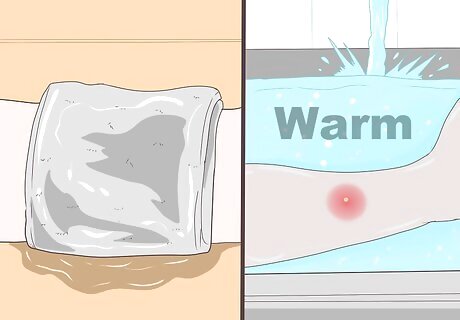
Apply a warm compress to help the wound drain naturally. Soak a washcloth in warm water, gently lay it on the surface of the wound, and let it sit there for a few minutes without applying pressure. Repeat this process 3 times throughout the day for 10 minutes. Wipe off any loosened pus gently. After a few minutes take the compress off the wound and very, very gently wipe the surface to remove any pus that you have loosened. If the wound is an open scrape or cut, fill a clean sink or basin with warm water. Submerge the wound for up to 10 minutes, repeating the process 3 times per day. Then, pat the area dry with a clean towel, removing any pus that has been loosened.
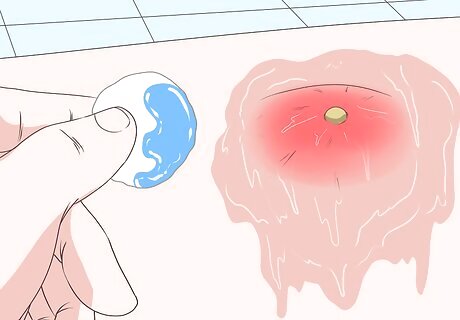
Clean the area with soap and water. Apply a small amount of liquid antibacterial soap to the wound and then rinse it off thoroughly. Be as gentle as possible to get all the soap off with clean water. It's important to get rid of the bacteria and any debris that is coming out of the wound in the pus. Doing this once a day helps keep the wound clean and allows it to heal. Once cleaned with soap and water, pat the area dry with a clean, fresh towel. Make sure it is totally dry before you bandage the wound or apply medication. If the wound is on a child, tell them not to touch the wound while it is drying and before you are able to re-bandage it.
Getting Medical Care
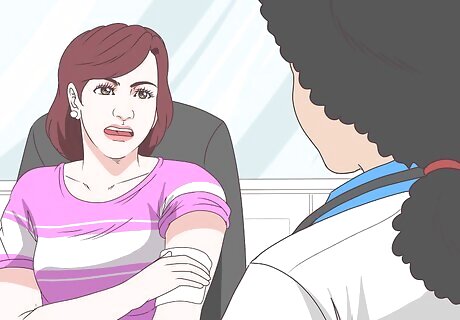
Go to the doctor if your wound is infected and won't heal. If your wound is infected, it's important to get medical care so that the infection doesn't grow and spread to other parts of your body. Signs of an infection that needs medical care include dark red coloring around the wound, swelling, a large amount of pus coming out of the wound, and a fever or a feeling of unwellness. While it is important for you to know how to care for the wound correctly, it's also important to know when to get professional medical care. If you have been cleaning the pus correctly for several days and your wound still won't heal and it continues to produce pus, it's time to contact your doctor.
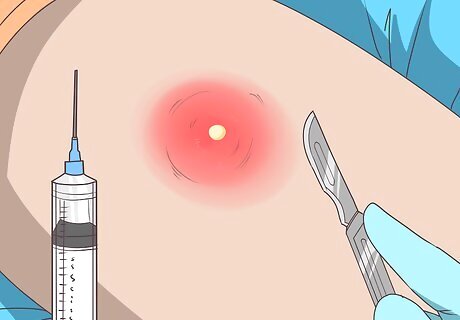
Get the wound cleaned out by a medical professional. A doctor can remove the pus with a syringe and drain the area. If the area has a large abscess, the doctor may need to open it up with a scalpel or insert a drainage tube, which will allow pus to drain out of the wound freely. If the area is very tender and painful, your doctor may be able to apply an anesthetic to the area to dull the pain during the procedure. Your doctor may pack the wound using dressings that are dipped in a saline solution. Then, they’ll place a bandage over the top of it.
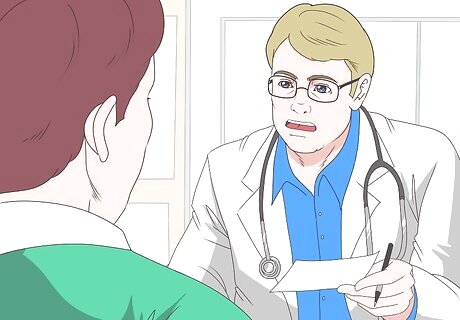
Follow your doctor's instructions for future cleaning of the wound. Once your wound has been cleaned and the pus removed by your doctor, they should give you instructions for aftercare. Typically this will include directions for changing any dressings and cleaning the wound as it heals. Follow your doctor’s instructions so that the wound will stop producing pus and can heal properly. The directions will vary slightly depending on where the wound is and how infected it has become.
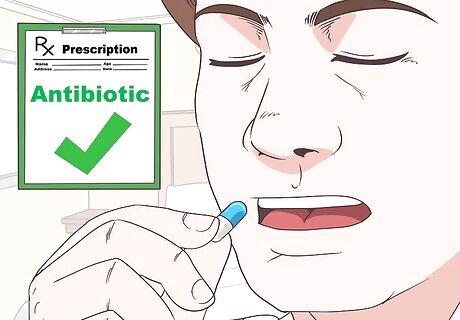
Take antibiotics to eliminate the infection. In many cases, taking antibiotics is what is really going to get rid of the pus and allow your wound to heal. Your doctor may prescribe a topical antibiotic that you will need to apply to the wound or a systemic medication in pill form that you will take daily. If your wound is highly infected, you’ll likely need to take an antibiotic pill to help stop the infection and prevent it from traveling elsewhere in the body. Follow your doctor's directions for when to apply or take the antibiotic and for how long to use it. It's important that you take it for as long as prescribed (even if it appears your wound is totally healed) so that the infection is totally eradicated.
Avoiding Common Mistakes
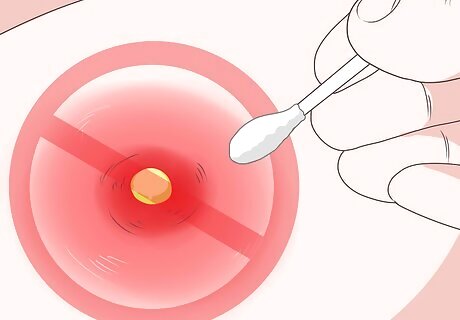
Do not stick tools or swabs into the wound. While you may be tempted to use a cotton swab or another tool to pull the pus out of a wound, there is a large chance that in the process you could reopen the wound further or introduce more bacteria into the wound. Because of this risk, it’s best to only do surface treatments at home and if you think that the wound needs more detailed cleaning, seek out care from a medical professional.
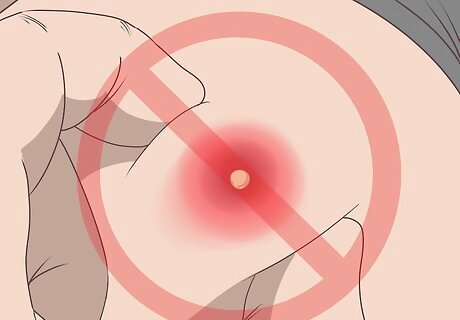
Avoid squeezing the wound. It may seem like this would be an effective way to remove pus but it's not. Squeezing the area can move the infection around and only serves to make things worse. Instead, be gentle with your wound as it heals, and allow your body to heal itself.
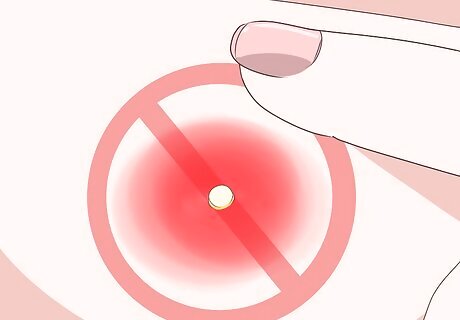
Avoid touching the pus and don't get it on surfaces. If you touch your wound with dirty hands, that can make the infection worse. Also, the pus can be a symptom of a contagious infection, so getting it on things that other people use can spread the infection. For instance, use separate towels from the rest of your family members. This will help minimize the risk of other people getting a contagious illness. Also, wash your hands often. This will minimize the chance that the infection is spread by touching things with dirty hands.




















Comments
0 comment